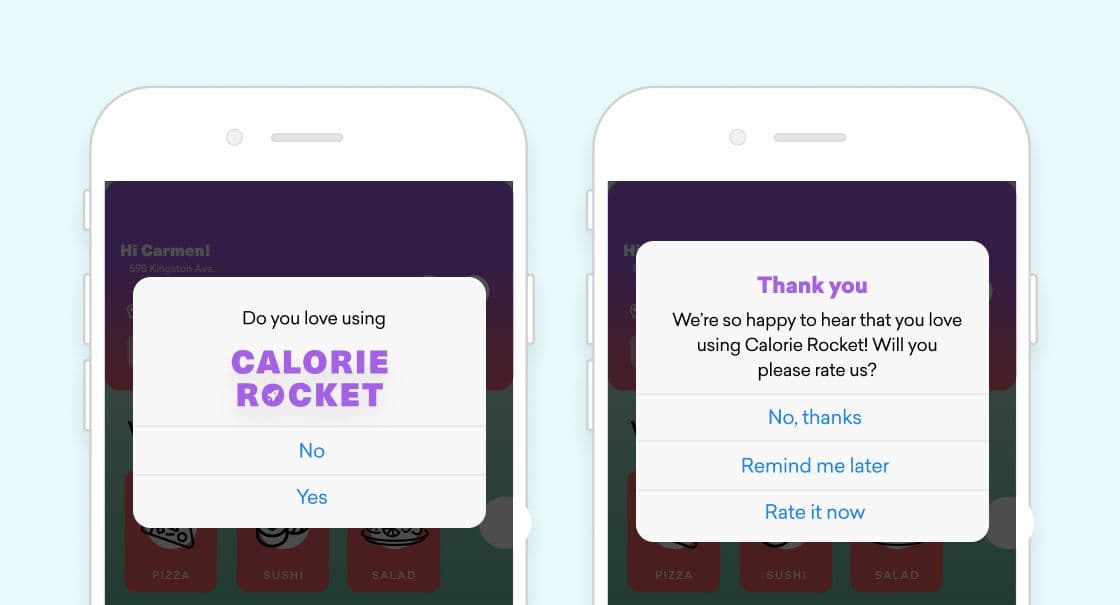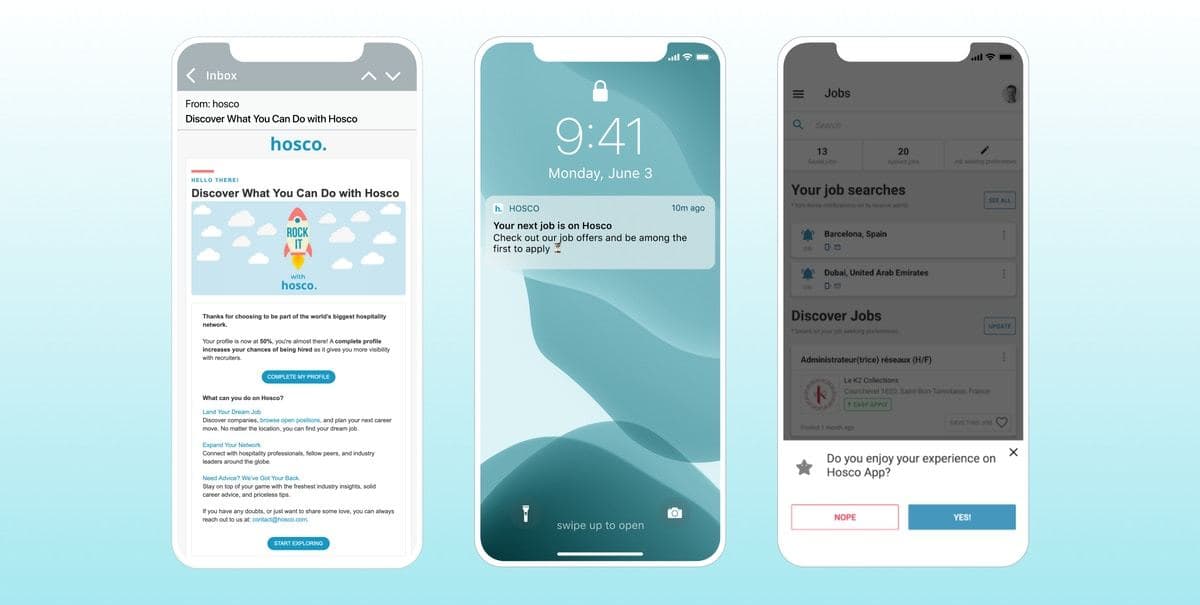The Do's and Don'ts of Customer App Ratings
Published on May 25, 2021/Last edited on May 25, 2021/5 min read


Adam Swiderski
WriterUser reviews and ratings were one of the biggest innovations in the early days of ecommerce. By putting the ability to score products into the hands of consumers, everyone from movie studios to banks to retailers democratized the recommendation process and opened up a new means of encouraging—or, in some circumstances, discouraging—new customers. Today, user reviews can make or break a product, and some have even achieved the lofty status of entertainment in their own right.

For mobile marketers looking to make an impression, garnering customer ratings can help an app stand out from a very crowded field. Positive reviews can help attract and convert new customers, and soliciting reviews can be an effective way of generating in-app customer action. As important as the process is, however, there are tactics both to be adopted and avoided in order to ensure a maximum return. Let’s take a look at some key do’s and don’ts when it comes to proactively generating positive customer app ratings.
Personalization, Segmentation, and the Effective Ratings Pitch
Generic, one-size-fits-all messaging is rarely the right answer in any promotional effort, and the same holds true when it comes to soliciting user reviews of an app. As with any campaign, adopting an approach that takes user behavior and their place in the customer journey into account will be more effective—and, in the case of ratings, can also lead to more positive results, which is always the more desired outcome!
- DO segment your audience to make sure those receiving prompts are most likely to respond, and respond positively. Active, loyal, engaged users are typically more inclined to take the time to rate their experience, and timing the request to the achievement of particular milestones, such as the completion of a new level in a mobile game, can capitalize on a moment when the user feels they’ve had a positive interaction with the app.
- DO personalize both delivery time and the content of the message. According to McKinsey’s Julien Boudet, “Personalization initiatives can deliver significant value, including on average 10-30% revenue uplift and higher customer acquisition rates and engagement.” This holds true across the board, even when soliciting user feedback.
- DO make it a conversation, rather than a simple prompt. If users opt not to leave a review, provide them the option to submit feedback via a form or email, especially if their response to the initial prompt is negative.
- DO embrace a cross-channel approach. In-app messages would seem to be the best method of outreach given they’ll be received by users who are already engaged, but avenues such as push notifications and email can also be effective for certain users.
Avoiding the Negative Zone
There are two ways customer ratings can hurt an app: If there aren’t enough of them, and if they’re negative. It’s the internet, so completely avoiding negative feedback entirely is most likely impossible. Still, there are certain behaviors brands can avoid to keep from discouraging ratings activity or ending up the recipient of the dreaded one-star rant.
- DON’T hit up users for a rating too early. Instead, give them time to engage and develop some loyalty, as well as the kind of experience with an app necessary to properly speak to its quality.
- DON’T over-ask. Customers are inundated with marketing messages almost constantly, no matter the channel.
- DON’T interrupt an activity with solicitation of a review. It should go without saying that disrupting a user in the middle of positive engagement isn’t likely to lead to positive feedback.
- DON’T ask for a positive rating, as studies have shown this can lead to negative ratings or an opt-out. Instead, first ask users if they’re enjoying their experience with the app, then solicit ratings from those who respond in the affirmative.
- DON’T let apps go unreviewed. Instead, ask beta testers and other advisors to provide honest ratings to get the ball rolling.
App Ratings Requests in the Wild
Now that we’ve digested the basics, let’s look at an example of the kind of in-app messages that real-world apps have utilized to encourage reviews.
Consider Hosco, a global recruitment platform for the hospitality industry. By taking advantage of the Braze platform’s ability to trigger messages based on user actions, Hosco sent app-rating in-app messages to users who had just carried out a high-value action, allowing them to drive up their app ratings on Apple’s App Store and Google Play by more than 17%.

Final Thoughts
The best way to generate positive user ratings and reviews is, of course, to field a quality product that sparks an enthusiastic response from its audience. That out of the way, the above strategies can go a long way toward ensuring new potential customers who encounter your app in their digital store of choice have positive takes to read, thereby hopefully converting them into future reviewers in their own right.
For more on the kinds of messaging that can be effective in engaging app users, be sure to check out the Braze in-app messaging guide.
Related Tags
Be Absolutely Engaging.™
Sign up for regular updates from Braze.
Related Content
View the Blog
The new inbox reality: How iOS changes are reshaping email marketing

Aparna Prasad

Experience optimization: Turning data insights into better journeys

Team Braze

December 2025 Bonfire Marketer of the Month: Jagex’s Emma Oliver
